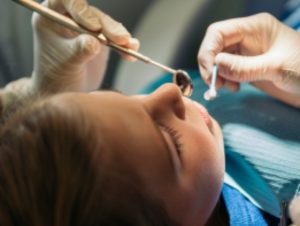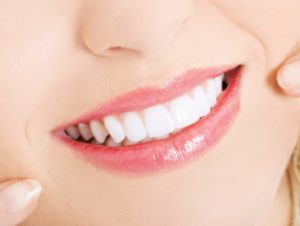The start of a new year is always a great opportunity to think about what you want to achieve in the next 12 months. In amongst the pledges to see friends more often, make more money and actually go to the gym, paying attention to your teeth and dental hygiene is a great area to focus on. Oral health is vital for so many reasons, including if you are looking at cosmetic treatments in 2024 like teeth whitening.
Here are some New Year’s Resolution ideas to get you started
- Flossing and brushing
We all know the importance of brushing our teeth regularly and flossing to keep them as clean as possible – no amount of cosmetic teeth whitening can fix teeth that are in poor condition due to inadequate care. Aim to floss every day – or at the very least, every other day. Brush for two minutes. Give each quadrant of your mouth equal attention and get a timer to help you keep track. Or, choose a song that lasts the same amount of time and sing it in your head as you brush to ensure you do it for long enough. Two minutes can take longer than you might think.
- Give up smoking to help with teeth whitening
Quitting smoking is a regular entry on people’s resolution list. Here’s yet another reason to commit to giving up in 2024. As well as the widely advertised health benefits elsewhere in the body, dropping the cigarettes and tobacco will decrease the likelihood of gum disease and tooth loss. Smokers can also find it harder to have successful dental implants. The staining effect of the nicotine also negates the benefits of having tooth whitening and other cosmetic treatments done.
- Watch what you eat
Again, this is a popular New Year’s resolution. However, from a dental point of view, opting for foods and beverages that don’t stain dental enamel is a great way to achieve natural teeth whitening. Some foods that are particularly bad for staining include tea, coffee, cola, chocolate, red wine and berries. If you don’t want to cut down completely, use a straw for darker drinks and avoid snacking on darker foods throughout the day – restrict them to one or two instances.
- Water, water everywhere
On the topic of food and drink, upping your water intake will have multiple benefits for your teeth, body, energy levels and more. Not only does drinking enough water keep you hydrated, it also aids in the production of saliva, which protects the teeth from bacteria and helps prevent cavities. Drinking water can also help keep bad breath at bay. Keep a water bottle with you take regular sips during the day. It won’t take long for that to become a very helpful habit.
- Electric versus manual
Is 2024 the year your dental care will ramp up a gear, technologically speaking? Switching from a manual toothbrush to an electric on is a great pledge to take this January. Electric brushes can get deeper inside the gaps between the teeth and help with teeth whitening with their deep, effective clean. They often have built-in timers too that help you keep brushing for two minutes.
- Use mouthwash
Another effective way to ward off bad breath is using mouthwash. It also helps with general oral health – although it doesn’t replace brushing and flossing. Mouthwash helps dislodge stuck food particles and washes away dark, staining liquids to help with teeth whitening. It can also help prevent gum disease and plaque build-up. Many mouthwashes also contain fluoride for added protection. Make sure you have a couple of bottles of mouthwash. This allows you to always have one on the go at home and one as a back-up, or to take away with you on holiday.
- Go to the dentist!
Finally, make a pledge to befriend your dentist in 2024. Set appointment for regular check-ups – and attend them! Dental check-ups need not be scary at all. Many dental surgeries are set up to welcome and reassure nervous patients. Tell yourself that the sooner a dental problem is spotted, the sooner it can be fixed. Catching things early can often mean that treatments are less invasive. Once your teeth are in a good state of health, you can book in cosmetic treatments like veneers or teeth whitening for later on in the year.
Living with a crooked smile or misaligned jaw can affect self-confidence, make it harder to keep teeth and gums clean and even cause discomfort or pain. Many adults are now looking into ways in which orthodontics can improve matters. One option that is proving particularly popular with adults at the moment is Invisalign.
What is Invisalign and how does it work?
Invisalign is a virtually invisible orthodontics treatment that enables the correction of the teeth to produce an improved smile. It is especially effective for people with gaps between their teeth, underbites, overbites and crooked or crowded teeth. The process uses custom moulded trays that fit exactly into the mouth, covering the teeth to encourage them to move into the desired position. The patient wears the trays throughout the day and night, although they can be removed for teeth cleaning, eating and special occasions. Every couple of weeks, a new mould is made to reflect how the teeth have moved. Eventually, this leads to perfectly straightened teeth.
What are the advantages of choosing this type of orthodontics?
Invisalign is a discreet form or orthodontics treatment, meaning that you don’t have to announce to friends and family what you are doing. The treatment can be hugely successful, both for minimal movements and in more severe misalignment cases. It does not hurt, and the straightening happens at a comfortable, controlled pace. You can eat and drink normally, as you are able to remove the Invisalign tray to do so. This also helps you to keep your teeth clean and follow your normal dental hygiene routines. Unlike other forms of corrective retainers, such as metal braces, there are no wires or brackets that could break off, or irritate your mouth.
How are the Invisalign trays measured and made?
At the start of the process, your orthodontics practitioner will ask a series of questions to help choose the best type of treatment for you. This will include a full medical history and run-down of your dental habits. They will also take photographs of your teeth and jaw. Next, your dentist will take detailed x-rays and scans that will be used to create your custom Invisalign trays. A computer simulation will show you how your teeth and jaw can be corrected – and what your smile will look like at the end of the treatment.
What happens during the fitting process?
Once the trays have been made, your orthodontics expert will fit them, make any adjustment necessary and explain how they work. You will then go home and wear them for two weeks, before returning to the dentist for your next custom-made mould. Your teeth will move a couple of millimetres each time, so the new tray will be measured to reflect the change and guide the teeth to their next required position. The small increments help ensure that the teeth are not damaged by being forced to realign too much at once. After the process is complete and your teeth are in their final positions, you will be given Invisalign retainers to wear. This stops the teeth them from moving back to their original positions while the bone hardens around the teeth.
How do you care for your Invisalign trays and retainer?
When you take your Invisalign trays or retainer out, wash them in lukewarm water and brush them gently with a toothbrush to remove any loose debris. This is especially important if you forget you are wearing them and eat or drink with them in. You should soak your tray daily in special solution provided by your dentist. Always brush your teeth and floss after eating and before replacing your Invisalign tray to help keep it clean. When not wearing them, store Invisalign trays and retainers in their case to prevent damage. Never share trays with anyone else.





